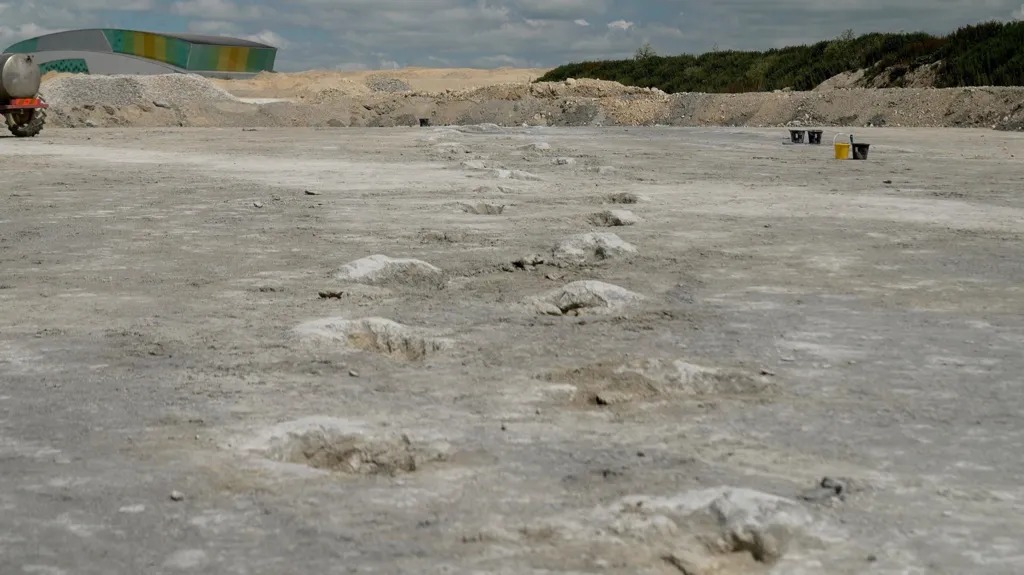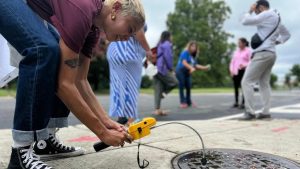
Unearthing the Jurassic Giants
How the Discovery Was Made
The footprints were first spotted by Gary Johnson, a worker at Dewars Farm Quarry, who noticed unusual patterns while clearing clay. His discovery led to a large-scale excavation involving over 100 scientists, students, and volunteers, which uncovered five distinct trackways.
A Closer Look at the Tracks
- Sauropod Tracks: Large, round footprints resembling those of elephants but far larger. These plant-eating dinosaurs, reaching up to 18 meters in length, walked on four legs.
- Megalosaurus Tracks: Tridactyl prints with three distinct toes, left by agile, bipedal predators up to 9 meters long.
Insights from the Trackways
What Dinosaur Tracks Tell Us
These footprints offer more than a record of presence; they reveal movement, behavior, and environmental conditions:
- Interaction Between Species: A unique crossing of paths shows a megalosaurus stepping over a sauropod’s footprint, suggesting the sequence of their movements.
- Preservation Mystery: Scientists believe storm events may have buried the tracks under sediment, preserving them for millions of years.
- Environmental Snapshot: The tracks were left in a warm, shallow lagoon, capturing a moment in prehistoric life.
Scientific Techniques and Findings
Innovative Methods in Paleontology
The excavation team employed cutting-edge techniques to document the site:
- Casts and 3D Models: Over 20,000 photographs were used to create detailed 3D models of the footprints and trackways.
- Behavioral Insights: Trackways reveal stride length and movement patterns, offering clues about the locomotion of these dinosaurs.
Preserving the Past
Future Plans for the Site
The fate of the trackways is still under discussion. Scientists are collaborating with quarry operators and Natural England to explore preservation options, ensuring this extraordinary discovery remains intact for future generations.
Why This Discovery Matters
A Window into Prehistoric Britain
These footprints provide a rare and detailed glimpse into life during the Jurassic period in Britain. Unlike fossilized bones, trackways offer direct evidence of behavior and movement, enriching our understanding of these ancient creatures.
External and Internal Links
- External Link: Learn more about dinosaur discoveries
- Internal Link: Explore other prehistoric findings





